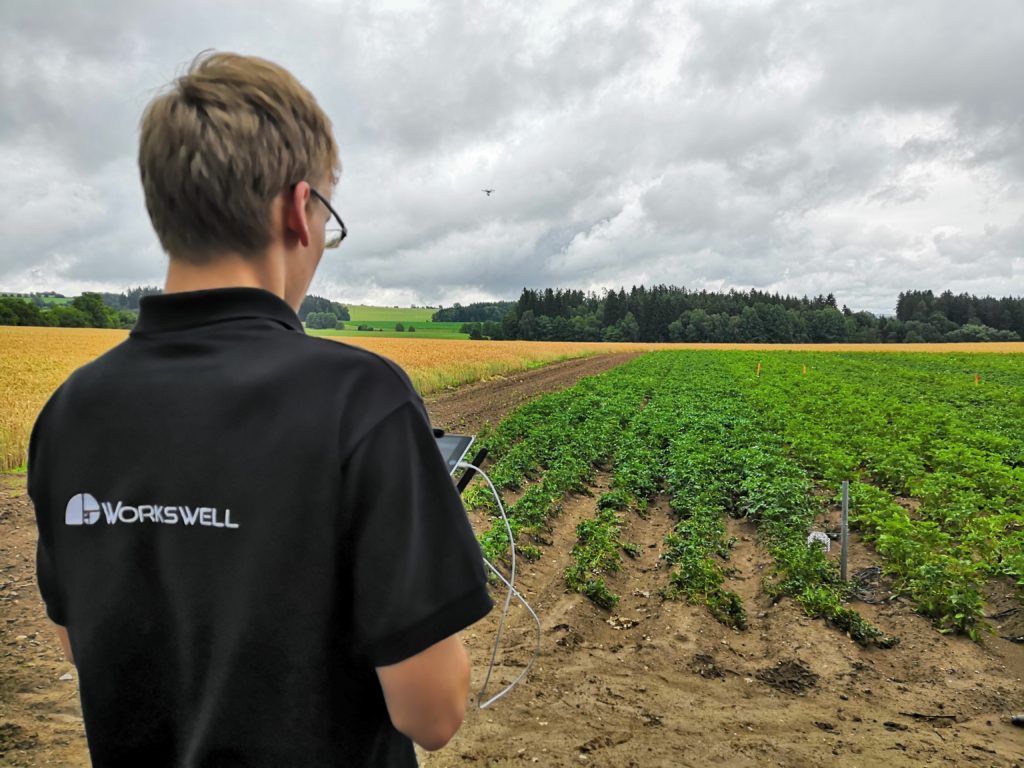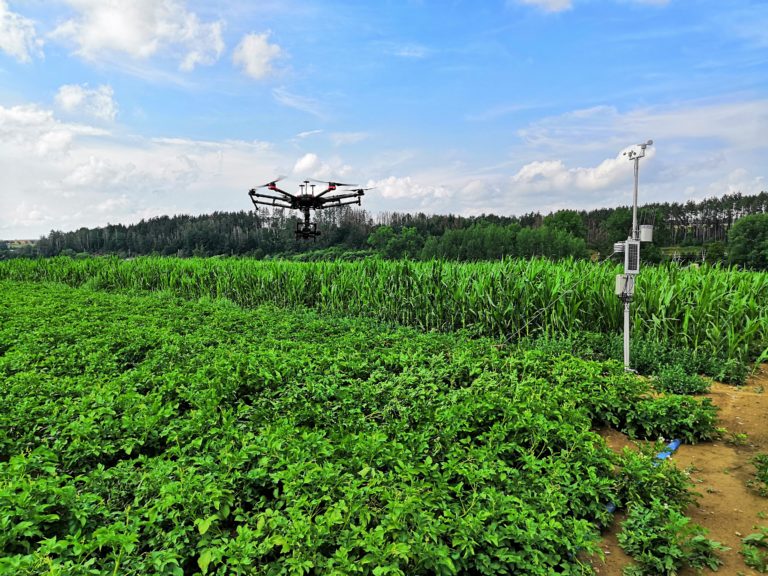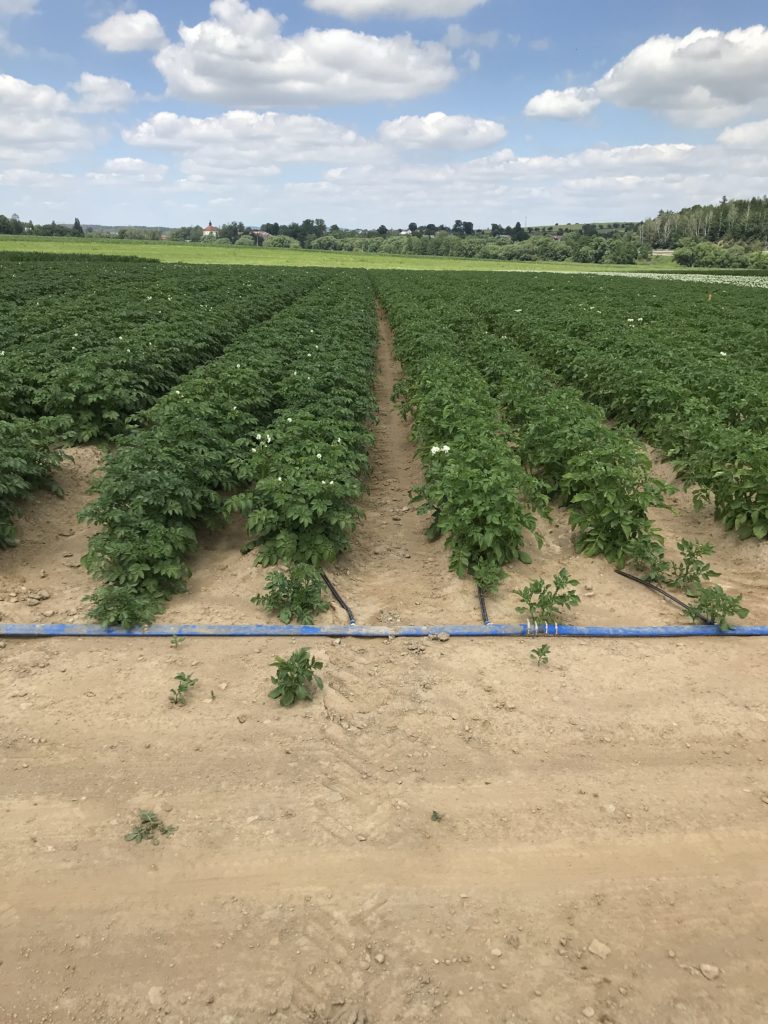Improve Potato Phenotyping With a CWSI Camera
After weathering record-breaking temperatures, parts of Europe are now gripped in a punishing drought that is shriveling harvests, sparking water shortages, and taking a toll on wildlife. Experts warn that Europeans must prepare for today’s „new normal“ climate. [1] This presents a serious challenge to research organizations tasked with developing new crops that are more tolerant to water stress, rainfall deficits, and overall climate change. What’s more, this situation is not limited to Europe. For instance, according to projected climatic changes, agricultural drought periods throughout Australia may increase by up to 20% by 2030 [2].
Potatoes are one of the main crops in Central Europe – it’s fair to say that they are a staple for hundreds of millions of people. In the past, this crop has proven to be one of the most effective tools in the fight against famine on the continent. Experts from many regions now must breed new varieties of potatoes that are adapted to ongoing climate change.


Figure 1.: Experimental field managed by the Potato Research Institute Havlíčkův Brod, in which different potato varieties are growing. The area covers more than a hectare, and this map consists of more than 600 images from a CWSI camera. Pix4D software was used to compose the map.
Potato research institute Havlíčkův Brod
The Potato Research Institute Havlíčkův Brod in the Czech Republic (Central Europe) is a research institute involved in potato research, consulting, diagnostic services, and variety development. The institute is divided into several departments. The Department of Growing Technologies is engaged in applied research into potato growing technologies, especially soil preparation and tillage, fertilization, and weed management. It is the accredited workplace for the performance of registration trials with herbicides for all agricultural crops, and with potato fertilizers. In addition, the institute provides technological consulting for agricultural practice.
The research institute has several experimental fields, where it tests a wide variety of genetic resources for potatoes. The process of cultivating the target properties of new potato varieties is time-consuming due to the need to characterize a large number of potential gene resources. These genetic resources can only be tested over the course of long-term field experiments.
One criterion that is particularly important today is the breeding of potato varieties that are resistant to water stress. Drought and dry years in central Europe are on the increase, and crops have to adapt accordingly. The CWSI (Crop Water Stress Index) is one of the tools used to measure the water stress resistance of the crop.


Workswell CWSI camera - new breeding opportunities
The CWSI (Crop Water Stress Index) is one of the indexes used to describe plant resistance to water insufficiency and consequent water stress. [3] Monitoring CWSI values across different potato varieties can help (especially when paired with other evaluated parameters) to classify potatoes into water stress sensitive or resistant varieties. The institute uses the Workswell CWSI thermal camera to monitor the water stress of individual potato varieties.
The Workswell CWSI camera is the only device of its kind. It is an LWIR system that can monitor the value of water stress over a large area when mounted on a drone. The camera’s output is image information with values ranging from 0 to 1. The higher the measured value is within that interval, the higher the value of water stress is for a given crop. The camera’s resolution is 640×512.
In Figure 1, we see an experimental field managed by Potato Research Institute Havlíčkův Brod, on which diverse potato varieties are growing. A large range of CWSI values can observed on the image. As we mentioned, CWSI values measured by CWSI cameras indicate the level of water stress to which the given stand is exposed, i.e. the higher the value is in the interval between 0 to 1, the more sensitive the given potato variety is to water stress.
The research institute uses images taken by the Workswell CWSI camera as a criterion in assessing individual potato varieties.
Citation: Phenotyping using CWSI camera offers new opportunities for fast, objective, and reliable measurement for breeding and genetics research. , Ing. Pavel Kasal, Ph.D., Potato Research Institute Havlíčkův Brod

Conclusion
Phenotyping with the Workswell CWSI thermal camera offers new opportunities for fast, objective, and reliable measurement for breeding and genetics research. We believe that the Workswell CWSI camera can be effectively used by research and breeding institutes around the world, especially where in locations with a current or expected water shortage.
References
[1] https://www.voanews.com/europe/after-record-heat-wave-parts-europe-now-face-drought
[2] Glover, J.; Johnson, H.; Lizzio, J.; Wesley, V.; Hattersley, P.; Knight, C. Australia’s Crops and Pastures in a Changing Climate—Can Biotechnology Help? Australian Government Bureau of Rural Sciences: Canberra, Australia, 2008
[3] Carlos Poblete-Echeverría, D. Espinace, D. Sepúlveda-Reyes, et al., Analysis of crop water stress index (CWSI) for estimating stem water potential in grapevines: Comparison between natural reference and baseline approaches, January 2017, Acta horticulturae 1150(1150):189-194
